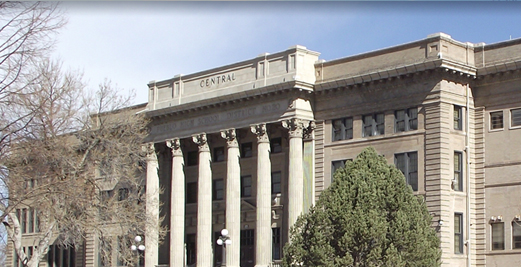South Pueblo was a place born of vision, of ambition, and of benevolence. It marked an intersection between the romantic mythology of the American West and limitless—often
ruthless—industrial capitalism. For centuries the natives of this land climbed its windswept promontories and arid bluffs to witness the Arkansas River escape the distant, granite spires
of the Rocky Mountains and emerge eastward onto the impossible vastness of the Great Plains. Here was a frontline of European conquest, where the King of Spain greedily guarded his empire against French incursion, though no monarch would ever step foot on its soil or ever know it as more than arbitrary lines on vague maps. Some Europeans passed through armed with gunpowder, others armed with the Word of God, turning their theology into geography: Sangre de Cristo—Blood of Christ. Empires rise and fall, and thus revolutionaries
claimed this land, first the Mexicans and then the Americans. Yet natives and missionaries, kings and revolutionaries could not have imagined what would finally conquer them all and
turn these mesas into a metropolis: steel.
In 1872 steel rails connected Pueblo to Denver and the rest of the nation. In turn, Pueblo manufactured even more steel rails, nails, barbed wire, and countless other goods that
helped transform the West. Yet the railroad and the steel industry and South Pueblo were all the products of one man’s vision, General William Jackson Palmer. He mused that in his
hands, Colorado could provide a tabula rasa upon which to write a new, kinder chapter in the history of the industrial revolution. With his own, new railroad as its foundation, Palmer envisioned an industrial utopia, a place where management and labor worked harmoniously together, toiling not for wealth but for enlightenment.
In the end, Palmer’s experiment in corporate liberalism failed tragically, leaving behind an irrevocable structure of hostilities between labor and management that ultimately led to
deadly labor disputes, including the Ludlow Massacre. But in South Pueblo, much of Palmer’s vision remained intact: careful consideration of public spaces and civic culture could enlighten
the lives of residents. The neighborhood was marked with distinctive, deliberate design: the curvilinear streets of the Blocks, the broad promenade of Abriendo Avenue, monumental edifices and plazas, and Pueblo’s preeminent places of learning. Moreover, Palmer’s comprehensive vision for South Pueblo meant that it did not develop like the city’s other
neighborhoods. As platted, South Pueblo was enormous. Thus, it grew within itself, through resubdivisions, rather than expanding outwardly via additions and annexations. Because all growth remained within South Pueblo’s originally platted boundaries and the neighborhood saw little development following World War II, it retains an unusually high level of architectural
cohesiveness and monumentality.
Almost all of South Pueblo’s later developers and prominent residents, ranging from corporate moguls to governors, were connected through Palmer to his industrial utopia. The neighborhood was home to many of Colorado’s foremost capitalists, most of whom continued Palmer’s ethic of benevolence and corporate liberalism. Many grew rich from the railroads, steel mills, and hundreds of other enterprises that made Pueblo among the southwest’s foremost industrial cities. And with their fortunes made, they spent the rest of their lives
in public service.
This context brings you the story of Palmer's industrial untopia and the men and women who called it home.
|
















